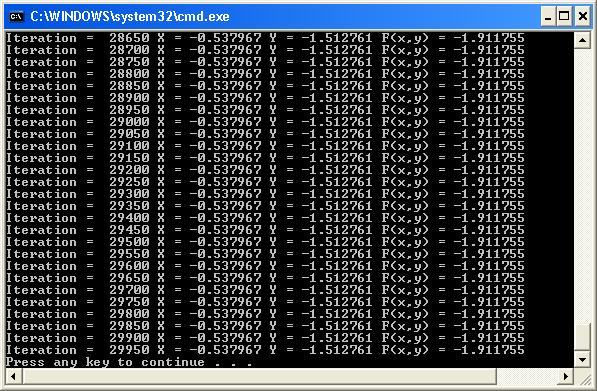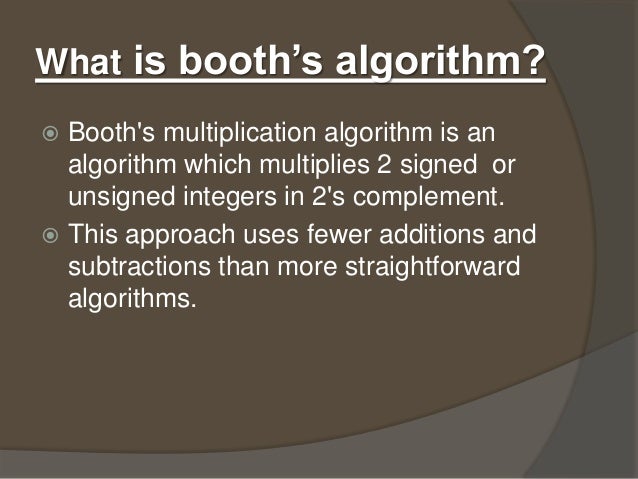

This is the table when we have executed the booth’s algorithm. Raw binary. Here is the table for the multiplication of two signed numbers using Booth’s algorithm.Ģ’s complement of 11100111 = 00011001 = -25 Booths algorithm implementation in C, for results of maximum 63 bits, since 64th bit is the sign bit. Multiplicand = 1011 and 2’s complement of (1011) = 0101 = -5 BOOTHS ALGORITHM FOR SIGNED MULTIPLICATION Booth algorithm gives a procedure for multiplying binary integers in signed 2s complement representation in. This algorithm is also famously known as Booth’s Multiplication Algorithm named after Andrew Donald Booth. C Program To Implement Booth’s Algorithm Learn how to implement Booth’s Algorithm in C Programming Language. We will solve this question using Booth’s algorithm. In radix-2 booth’s algorithm, if we are multiplying 2 ‘n’ bits number. multiplier, multiplicand, and Product during each iteration. Please fill the following tables showing the content of each of the three registers, i.e. Add 1 if the multiplier is negative two's complement, and 0 if it is positive.Question Suppose we need to do multiplication on two signed binary numbers: 1101 x 1010.

Booth’s algorithm is of interest in the study of computer architecture. Booth used desk calculators that were faster at shifting than adding and created the algorithm to increase their speed. *A red 1/0 bit is added to extent the multiplier to an even number of bits before the most significant bit (MSB) for the Bit-Pair Recoding Method conversion. Booth’s algorithm is a multiplication algorithm that multiplies two signed binary numbers in 2’s complement notation. (The 15th bit from right to left contains decimal point) By the looks of it, however, Radiohead hid a computer program on the tape that comes with the. The C++ program is successfully compiled and run on a Linux system.

Same as the Booth Recoding above, a red zero is added after the least significant bit (LSB) for the Booth Recoding conversionīinary's decimal point position = Multiplicand least significant bit (LSB) × Multiplier LSB = 2 -7 × 2 -7 = 2 -7 + -7 = 2 -14 Here is source code of the C++ Program to Implement Booth’s Multiplication Algorithm for Multiplication of 2 signed Numbers. Since the Multiplier is an even number of bits, we don't add the bit before MSB.

If the Multiplier is an odd number of bits, a 1/0 bit is added to extent the multiplier to an even number of bits before the most significant bit (MSB) for the Bit-Pair Recoding Method conversion. *A red zero is added after the least significant bit (LSB) for the conversionĬlick on the zeros in "Booth Recoding" above to view the pair of bit of each conversion! Booth Multiplier Recoding Table: Multiplier:


 0 kommentar(er)
0 kommentar(er)
